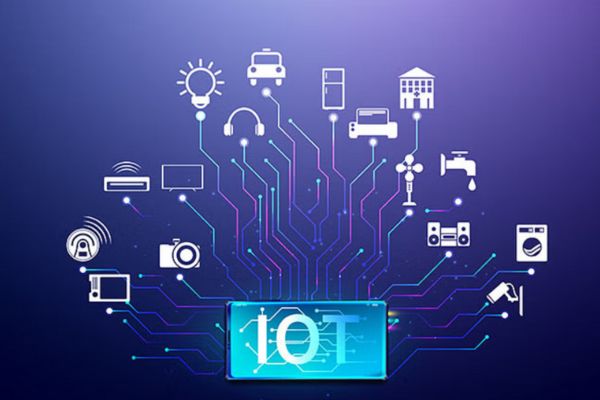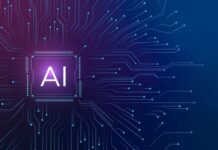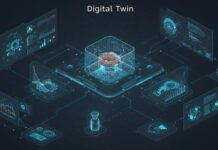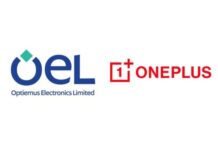The Internet of Things (IoT) revolutionizes sectors by enabling device connectivity and data exchange, driving efficiency, reducing costs, and enhancing user experiences. This transformation allows smart homes, connected cars, and intelligent industrial systems to thrive, leveraging real-time data for optimized operations and improved decision-making. IoT’s impact spans healthcare, manufacturing, and beyond, creating a more integrated and responsive world. Here are six game-changing IoT solutions that are making a significant impact:
1. AIoT – AIoT: The Synergy of AI and IoT
AIoT, the convergence of Artificial Intelligence (AI) and the Internet of Things (IoT), combines AI’s intelligence with IoT’s connectivity to create powerful, data-driven solutions. IoT sensors generate vast amounts of data, which AI systems analyze to make intelligent decisions. This synergy enables predictive maintenance, personalized experiences, efficient resource management, and autonomous systems, revolutionizing industries by enhancing operational efficiency and user engagement.
Applications of AIoT:
- Predictive Maintenance: AIoT systems analyze data from IoT sensors to predict equipment failures before they occur, reducing downtime and maintenance costs.
- Personalized Experiences: AI algorithms use data from IoT devices to tailor services and products to individual preferences, enhancing user satisfaction.
- Efficient Resource Management: AIoT optimizes the use of resources like energy and water by analyzing consumption patterns and predicting future needs.
- Autonomous Systems: Self-driving cars and drones use AIoT to navigate and make real-time decisions, revolutionizing transportation and logistics.
AIoT is revolutionizing industries, enhancing efficiency, and improving lives worldwide through intelligent, connected solutions.
2. IIoT (Industrial IoT) – Transforming Industrial Operations
IIoT applies IoT technology to industrial sectors, enabling real-time monitoring, predictive maintenance, and process optimization. This integration enhances operational efficiency, minimizes downtime, and improves productivity. By leveraging connected devices and data analytics, IIoT provides valuable insights, helping industries to anticipate issues before they occur, streamline operations, and make informed decisions, ultimately leading to cost savings and improved performance.
Key Benefits of IIoT:
- Predictive Maintenance: IIoT enables continuous monitoring of machinery, predicting potential failures and scheduling maintenance proactively, thereby minimizing downtime and extending equipment life.
- Operational Efficiency: Real-time monitoring of equipment and processes allows for immediate adjustments, optimizing production, and reducing waste.
- Enhanced Safety: IIoT systems monitor environmental conditions and equipment status, improving workplace safety by alerting workers to potential hazards.
IIoT is driving significant advancements in manufacturing, energy, and other industrial sectors by enhancing efficiency and safety.
3. Connected Healthcare – Revolutionizing Patient Care
Connected healthcare leverages IoT devices to facilitate ongoing health monitoring and personalized healthcare delivery. Through wearable health monitors and remote patient monitoring systems, real-time data is obtained, enabling early detection of health issues and enhancing patient outcomes. This approach ensures that individuals receive timely interventions and tailored treatment plans based on their unique health data. By harnessing the power of IoT technology, healthcare providers can offer proactive and preventative care, ultimately improving the overall quality of healthcare delivery.
Benefits of Connected Healthcare:
- Continuous Health Tracking: Wearable devices monitor vital signs and transmit data to healthcare providers, enabling continuous oversight and timely interventions.
- Early Detection: IoT devices detect anomalies in health data early, allowing for prompt treatment and better management of chronic conditions.
- Personalized Healthcare: Data from IoT devices helps tailor treatments to individual patients, improving the effectiveness of healthcare interventions.
- Cost Reduction: Remote monitoring reduces the need for frequent hospital visits, lowering healthcare costs for both patients and providers.
Connected healthcare is transforming medical practices, making healthcare more proactive, personalized, and accessible.
4. Precision Agriculture – Optimizing Farming Practices
Incorporating IoT technologies, precision agriculture transforms farming practices by collecting vital data on soil moisture, temperature, and crop health. This data-driven approach empowers farmers to make informed decisions, fine-tune irrigation methods, and optimize crop yields, all while preserving valuable resources. By harnessing real-time information, farmers can precisely tailor their actions to meet the specific needs of each crop, maximizing efficiency and minimizing waste. Ultimately, precision agriculture represents a significant leap forward in sustainable farming practices, enabling growers to achieve greater productivity while minimizing environmental impact.
Key Advantages of Precision Agriculture:
- Data-Driven Decisions: IoT sensors provide real-time data on soil and crop conditions, helping farmers make informed decisions about planting, fertilizing, and harvesting.
- Optimized Irrigation: IoT systems automate irrigation based on soil moisture levels and weather forecasts, conserving water and improving crop yield.
- Enhanced Crop Yields: By monitoring crop health and environmental conditions, farmers can address issues promptly, ensuring healthier crops and higher yields.
- Resource Conservation: Precision agriculture reduces the use of water, fertilizers, and pesticides, promoting sustainable farming practices.
Precision agriculture is revolutionizing farming by making it more efficient, productive, and sustainable.
5. Supply Chain Optimization – Enhancing Supply Chain Efficiency
Supply chain optimization provides real-time visibility into goods’ movement and condition, ensuring transparency and enabling proactive decision-making. Integrating sensors and tracking devices allows monitoring of location, temperature, and humidity, minimizing delays and disruptions. Precise inventory knowledge helps streamline operations, reducing stockpiling and costs. Accurate tracking facilitates resource allocation and route optimization, enhancing efficiency and reducing negative impact on environment. IoT-driven supply chain optimization improves operational efficiency, cost-effectiveness, and trust within the supply chain ecosystem.
Benefits of Supply Chain Optimization:
- Real-Time Tracking: IoT-enabled devices track goods in real-time, providing visibility into their location and condition, and reducing the risk of loss or damage.
- Inventory Management: Real-time data helps optimize inventory levels, reducing holding costs and ensuring timely replenishment.
- Enhanced Transparency: IoT solutions improve traceability and accountability, making it easier to track the origin and journey of products.
- Minimized Delays: By monitoring and managing the supply chain in real-time, companies can quickly address issues, reducing delays and improving customer satisfaction.
Supply chain optimization through IoT is transforming logistics by making supply chains more transparent, efficient, and responsive.
6. Smart Cities – Improving Urban Living
Smart cities utilize IoT technologies to monitor and regulate urban aspects like traffic, waste management, and energy usage. By integrating sensors and data analytics, municipalities obtain real-time insights, optimizing resources and efficiency. For example, traffic systems adjust signals based on flow to reduce congestion, while waste management optimizes collection routes, cutting costs and environmental impact. Additionally, smart energy grids monitor usage and adjust supply, promoting sustainability. These initiatives foster resilient, livable cities where resources are efficiently used, enhancing citizens’ quality of life. Through IoT adoption, smart cities pave the way for technologically advanced, environmentally sustainable, and inclusive urban environments.
Key Features of Smart Cities:
- Smart Traffic Management: IoT sensors and AI optimize traffic flow, reduce congestion, and enhance public transportation systems.
- Waste Management: IoT-enabled waste management systems monitor bin levels and optimize collection routes, improving efficiency and cleanliness.
- Energy Management: Smart grids and IoT-enabled lighting systems reduce energy consumption and promote sustainable practices.
- Public Safety: Connected cameras and sensors enhance security and emergency response systems, ensuring safer urban environments.
Smart cities are transforming urban living by making cities more efficient, sustainable, and livable.
In conclusion, IoT’s transformative impact spans various sectors, evident in six key innovations: AIoT, IIoT, connected healthcare, precision agriculture, supply chain optimization, and smart cities. By integrating intelligent technology, these advancements promise enhanced efficiency, safety, and connectivity. From AI-enhanced decision-making to real-time supply chain management, IoT offers tailored solutions. In healthcare and agriculture, personalized care and data-driven farming optimize outcomes and resource usage. Smart cities leverage IoT for efficient urban management, fostering sustainability and improving quality of life. These innovations highlight IoT’s power in shaping a connected and technologically advanced future.

















